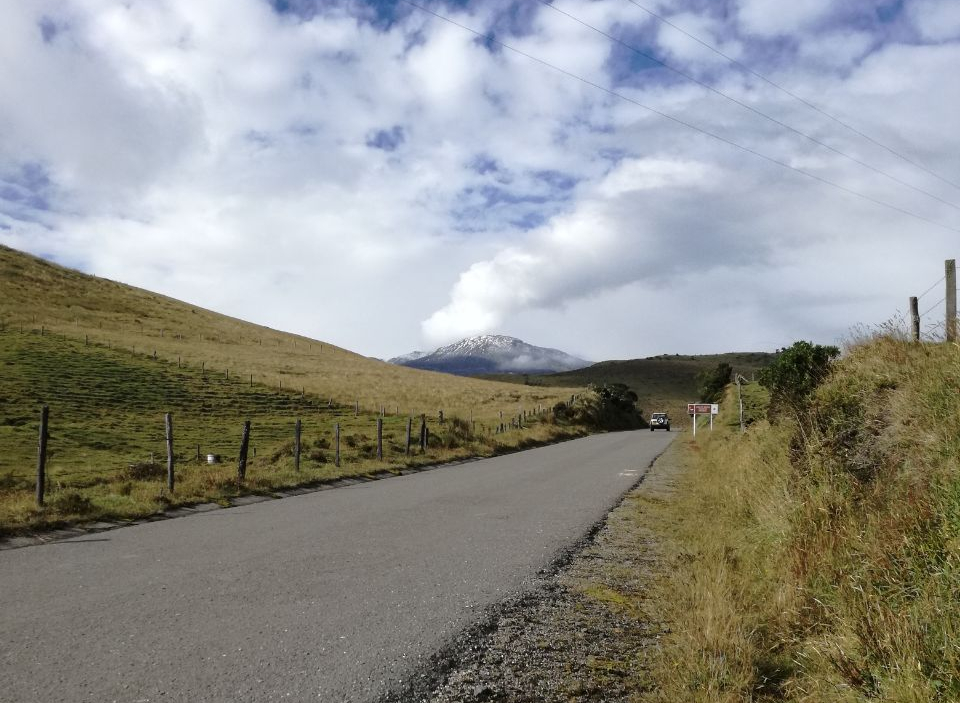
Erika Ronchin – Sapienza University of Rome
The understanding of the behavior of a volcano is extremely important to planning the human activities around it and, possibly, the evacuation before a threatening eruption. Therefore, volcanologists are busy improving and expanding the monitoring networks at volcanoes to catch subtle deformation, seismic activity, alteration in gas emissions, and changes in gravity signals that could provide some hints about the development of volcanic activity.
The way these signals are interpreted and the implications they have in forecasting volcano activities are strictly related to the knowledge of volcanic systems and of historical eruptions. This is why it is so important to expand the knowledge of a volcanic system before the eruption, integrating all possible information that we can collect.
In this context, PICVOLC is a project that aims at combining many geophysical methodologies to reveal the internal structures of volcanoes, to support decisions to implement the monitoring network, and to identify possible sources of re-activation signals that are detected at the surface. The main focus of the study is the active volcano Nevado del Ruiz in Colombia (Fig. 1), sadly known for the deadliest toll of the last century. It was caused in 1985 by a lahar that destroyed the town of Armero and was generated when pyroclastic material from a modest explosive eruption led to the sudden melting of the volcano ice-cap. At the moment PICVOLC is at its first stage that includes a first structural gravity Bouguer survey of Nevado del Ruiz and a joint inversion of the resulting Buoguer gravity anomaly with seismic tomography to image the internal structures of the volcano.

Together with the crew of the Observatory of Manizales (Colombia), we performed a first structural gravity Bouguer campaign in the Spring 2019 on the volcano edifice and its vicinity (Fig. 2). 108 new gravity measurements were collected on Nevado del Ruiz along paved roads and mountain paths of the National Park of the Nevados that offered safe access to the volcano edifice. The covered roads and paths are distributed over an area of about 23 km2, from an altitude of about 2000 m to a maximum of about 5000 m a.s.l. The documentation of spatial variations in the volcano’s gravity field is the basis for the identification of subsurface density distribution and of structural discontinuities. These aspects are of particular interest due to their implications for edifice stability, fluid migration, transfer of stresses, and thus the interpretation of deformation data detected by the GPS network of the observatory and InSAR.
Another structural gravity campaign, planned for next year, will expand the coverage of the survey and refine it in the areas close to the edifice, thus adding more details to the Bouguer gravity anomaly. In the meanwhile, a joint inversion of the first Bouguer anomaly distribution with seismic velocities can already provide enough information of the internal structures of the volcano to build a 3D Finite Element Method Model of the volcano for the study of fluid migration and stress transfer.

If you are interested in the activity of Nevado del Ruiz, you can see the last report and some spectacular images – here!

Erika Ronchin is a post-doc, Marie Curie fellow at Sapienza University of Rome, working on the PICVOLC project in collaboration with INGV of Rome and Bologna, IREA of Naples, and the Volcano Observatory of Manizales (Servicio Geológico Colombiano). She is interested in how magma moves and accumulates beneath volcanoes, affecting them with surface deformation and changes in the distribution of material densities.
She is now focusing on the integration of numerical models and data from geophysical investigations to characterize the volcano systems and understand their changes. PICVOLC is financed by an individual fellowship of the European Union’s Horizon 2020 research and innovation programme, granted to Erika Ronchin under the Marie Skłodowska-Curie grant agreement No. 793811. You can read more about PICVOLC and follow its development in a dedicated blog here: https://erikaronchin.wordpress.com/picvolc/.


Leave a Reply